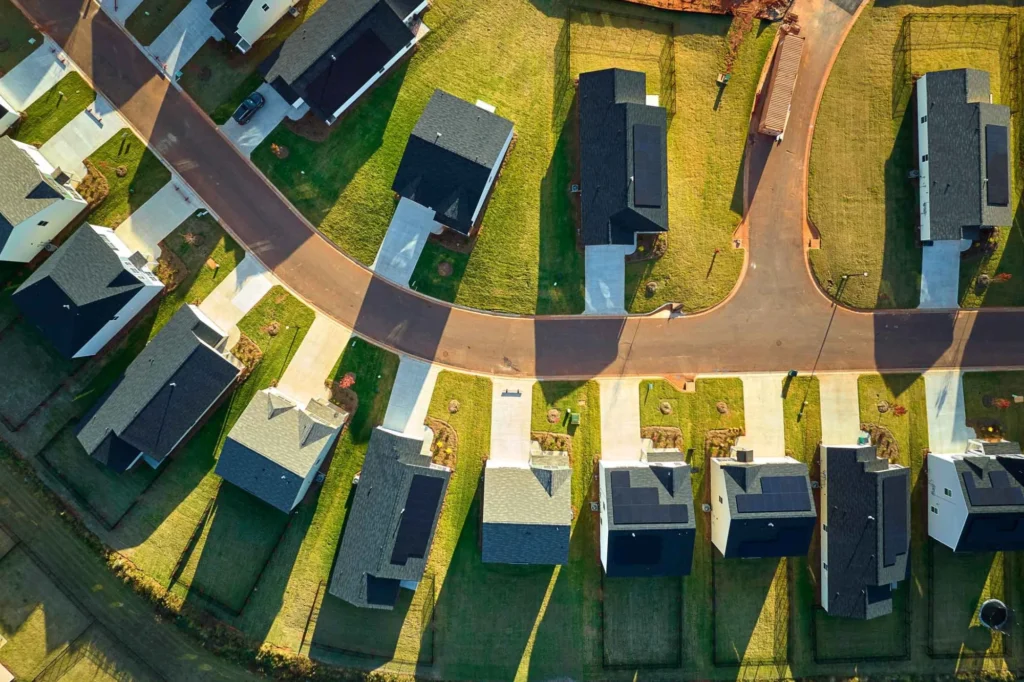
Get Rid of Millipedes in Your Strawberry Home for Good
Low spots and canal-influenced humidity near Strawberry keep millipedes active around foundations.
We break the cycle with targeted exterior applications and moisture corrections tailored to your lot. Contact All U Need Pest Control at 1 (888) 239-BUGS.
Pest Control Services in Strawberry, SC
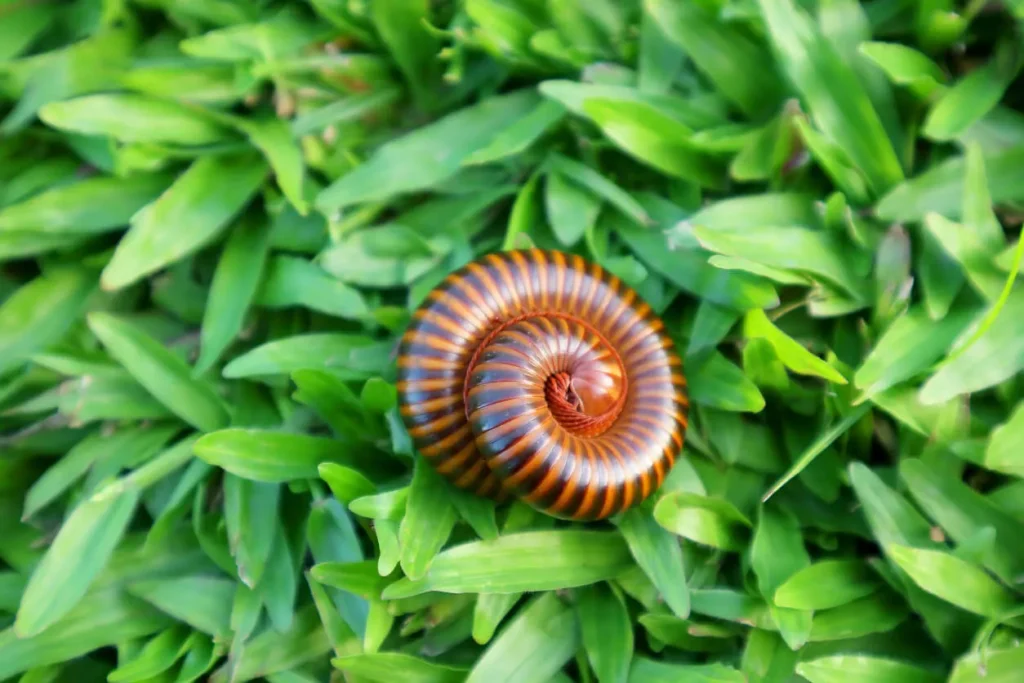
Millipede Control in Strawberry, SC
Millipedes are a frequent problem for homeowners in Strawberry, South Carolina, especially during the rainy and humid months of the year. Known for their many legs and slow-moving bodies, these pests thrive in the damp soil, pine straw, and leaf litter common throughout the Lowcountry. After heavy rain, residents often notice millipedes gathering on porches, patios, garages, and even inside homes along baseboards. While not harmful, millipedes can secrete a fluid that leaves stains and causes skin irritation, making their presence unpleasant and disruptive.
Strawberry’s location in Berkeley County provides the perfect setting for millipedes. The humid subtropical climate brings long summers, frequent thunderstorms, and wet seasons that keep soil saturated. Many homes are surrounded by wooded areas, farmland, and natural vegetation, which provide a steady supply of organic matter for millipedes to feed on. Architectural styles in Strawberry often include crawl spaces, porches, and shaded yards that hold moisture, further attracting these pests. Pine straw and mulch, commonly used for landscaping, create additional hiding places where millipedes thrive.
All U Need Pest Control provides professional services designed to protect homes in Strawberry. Whether you live in a rural farmhouse, a suburban-style home, or a newer build, our team creates customized strategies to address millipede infestations. By focusing on moisture control, habitat adjustments, and targeted treatments, we provide solutions that not only remove current pests but also prevent future outbreaks.
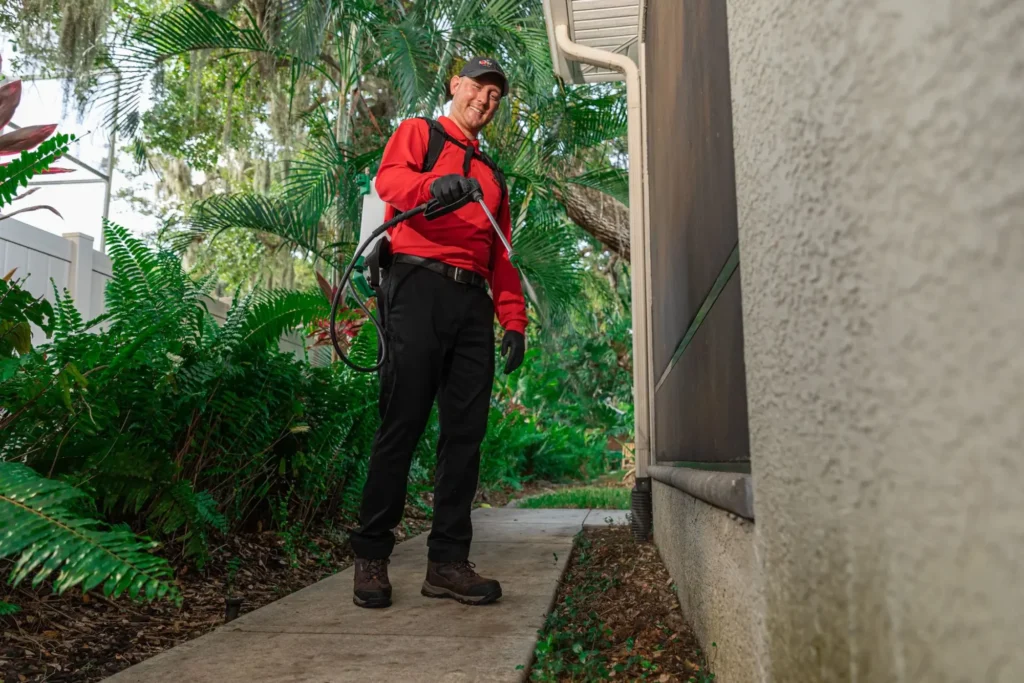
How to Get Rid of Millipedes in Strawberry, SC
Millipedes rely on decomposing organic matter such as leaves, mulch, and damp wood to survive. When soil becomes waterlogged and low in oxygen, they migrate toward drier conditions, often inside homes. This explains why they appear suddenly during or after storms. Sweeping them outside may offer quick relief, but it does not prevent new invasions. Long-term success requires eliminating the conditions that attract them.
Our Strawberry-specific strategy includes:
Correct moisture. Redirect water away from the foundation with extended downspouts and splash blocks. Improve crawl space ventilation or consider encapsulation to keep soil dry. For slab homes, use gravel strips around the foundation to reduce water buildup.
Modify habitat. Remove thick mulch near the home and replace it with gravel or thinner layers. Regularly rake and bag leaves after storms and trim shrubs to allow better airflow around the foundation.
Seal entries. Install sturdy door sweeps, repair thresholds, and add protective covers to vents and weep holes. These small upgrades reduce millipede access points.
Apply targeted treatments. Perimeter applications and entry-point treatments form a strong protective barrier. Timing treatments after heavy rainfall ensures longer-lasting results in Strawberry’s climate.
Maintain routinely. Seasonal services throughout spring, summer, and fall keep homes protected during the most active millipede seasons.
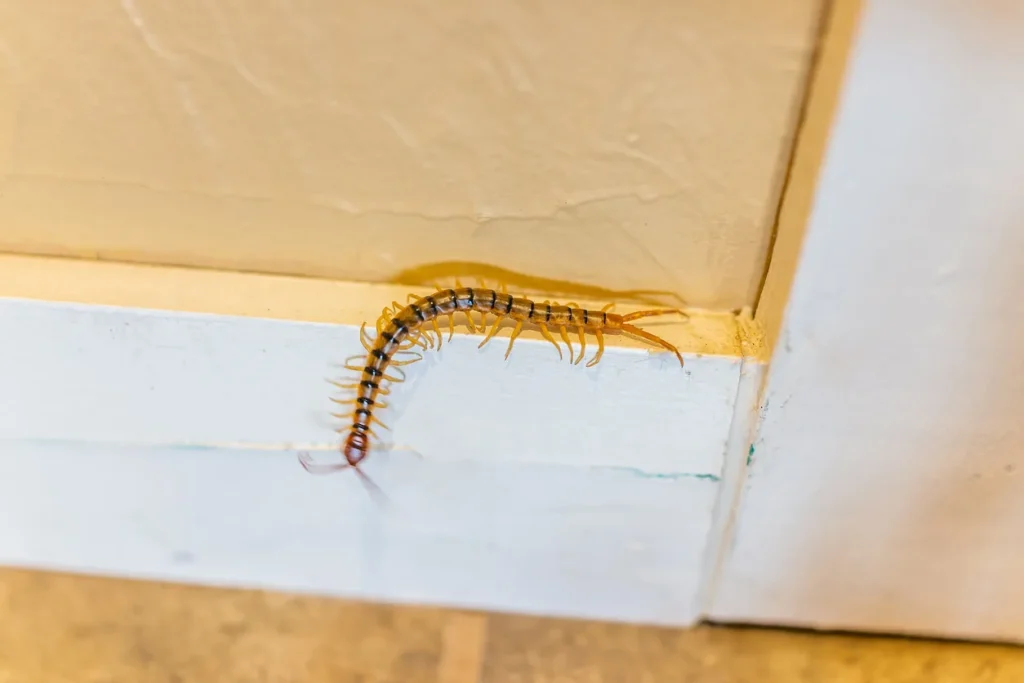
Millipede Treatment in Strawberry, SC
Every property in Strawberry faces unique conditions that influence pest activity. Some homes sit near wooded lots, others near farmland, and many are landscaped with dense vegetation. At All U Need Pest Control, we begin with a detailed inspection to evaluate the exact factors creating millipede pressure. From there, we design a custom plan that addresses both prevention and treatment.
- The selection of plants and trees on your property and how they create shade and retain moisture.
- The type and thickness of mulch or ground cover surrounding porches and foundations.
- Irrigation schedules and drainage systems that may leave soil overly saturated.
- Proximity to fields, forests, or shaded areas where millipedes thrive.
We also refine our treatment approach by considering:
- Patterns of millipede activity, such as whether they appear after rainfall, in garages at night, or around crawl spaces.
- Seasonal factors such as heavy summer storms or wet fall weather that drive them inside.
This allows us to apply treatments strategically, maximizing effectiveness while minimizing product use.
Comprehensive Inspection/Consultation
Our process begins with a full inspection of your property. We check grading, drainage, gutters, and mulch beds while also examining crawl space conditions and ventilation. Entry points like door thresholds, vents, and weep holes are closely inspected. In rural areas of Strawberry, where properties often border wooded areas, we also evaluate natural debris and leaf litter accumulation. Based on our findings, we create a tailored plan to resolve infestations and prevent recurrence.
Treatment
We apply treatments precisely where millipedes are most likely to travel. This includes foundation edges, porch steps, crawl spaces, and shaded garages. Treatments are timed around Strawberry’s frequent storms to create barriers that last when pests are most active. Our approach ensures maximum effectiveness while limiting unnecessary exposure.
Ongoing Maintenance
Because Strawberry’s climate creates ideal conditions for millipedes, ongoing maintenance is critical. Seasonal services reestablish barriers, monitor vulnerable areas, and address problems before they grow. This ensures consistent protection and peace of mind for homeowners year-round.
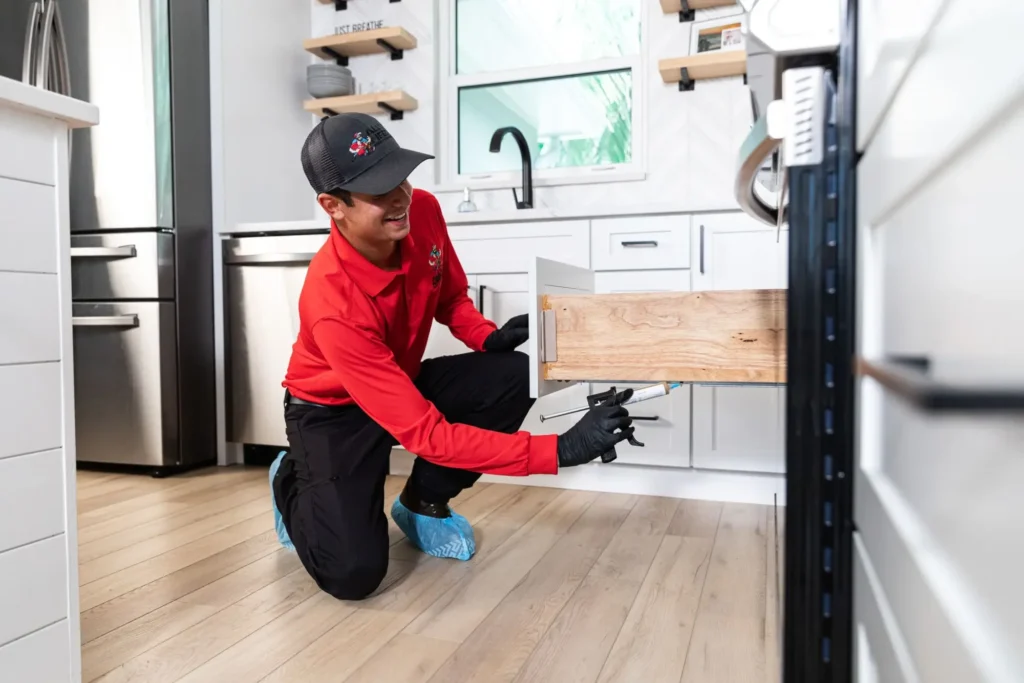
Signs of a Millipede Infestation in Strawberry, SC
Sightings in Damp Areas
Millipedes are most often found in damp and shaded environments. In Strawberry homes, they gather in basements, bathrooms, crawl spaces, and laundry areas. Outside, they are commonly seen in mulch beds, under mats, or along porches. Large groups typically appear after heavy summer rains or during long wet spells.
Damage to Plants
Though millipedes primarily consume decomposing matter, they sometimes nibble on seedlings or tender plants. In Strawberry gardens, this can harm vegetables or flowering plants in shaded beds. Keeping garden beds clear of excess debris and using less water near foundations reduces the risk of damage.
Dead Millipedes
When millipedes move indoors, the dry air often kills them. Finding curled, dried bodies along thresholds, garages, or hallways is a sign that they are entering from outside. Cleaning up the remains solves the immediate mess but does not stop the cycle. The key is to address outdoor conditions to prevent new invasions.

How to Check for Millipedes in Your Strawberry Home
- Inspect basements, crawl spaces, garages, and bathrooms for live millipedes in damp corners.
- Check door sweeps, window frames, and vent screens for small gaps that allow entry.
- Look for leaf litter, pine straw, and mulch piled against the home’s foundation.
- Examine drainage areas, patios, and low-lying parts of the yard that stay wet after storms.
If you only notice millipedes inside occasionally, they may be entering at night or through hidden cracks. Professional inspections can identify the entry points and environmental conditions behind the issue.
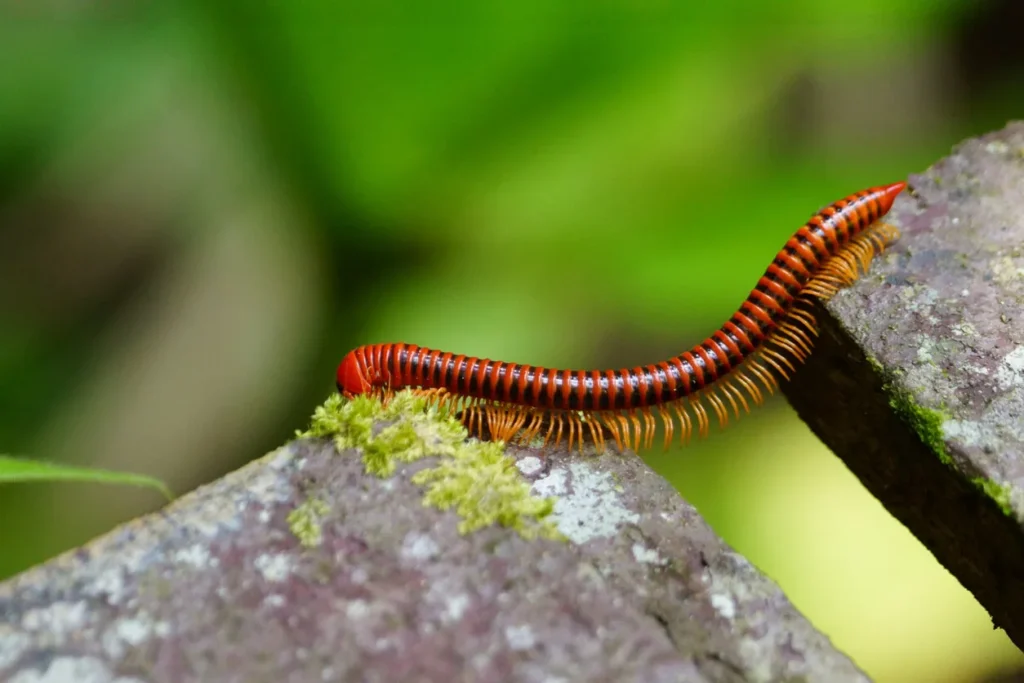
What Do Millipedes Look Like?
Millipedes are cylindrical arthropods with segmented bodies. Each segment has two pairs of legs, giving them their distinctive appearance. In Strawberry, they are most commonly dark brown to gray, blending with the soil and mulch in yards. Unlike centipedes, which are flatter and faster with one pair of legs per segment, millipedes move slowly and curl into a tight coil when disturbed.
Other identifying traits include:
- Dark to gray coloring that blends with pine straw, mulch, and damp soil.
- Rounded twig-like bodies made of multiple segments with numerous legs.
- Short antennae that help them navigate dark and damp environments.
Millipedes can live for several years and reproduce in moist soil or organic matter. By reducing perimeter moisture and keeping debris away from the foundation, homeowners can disrupt their life cycle and reduce infestations.
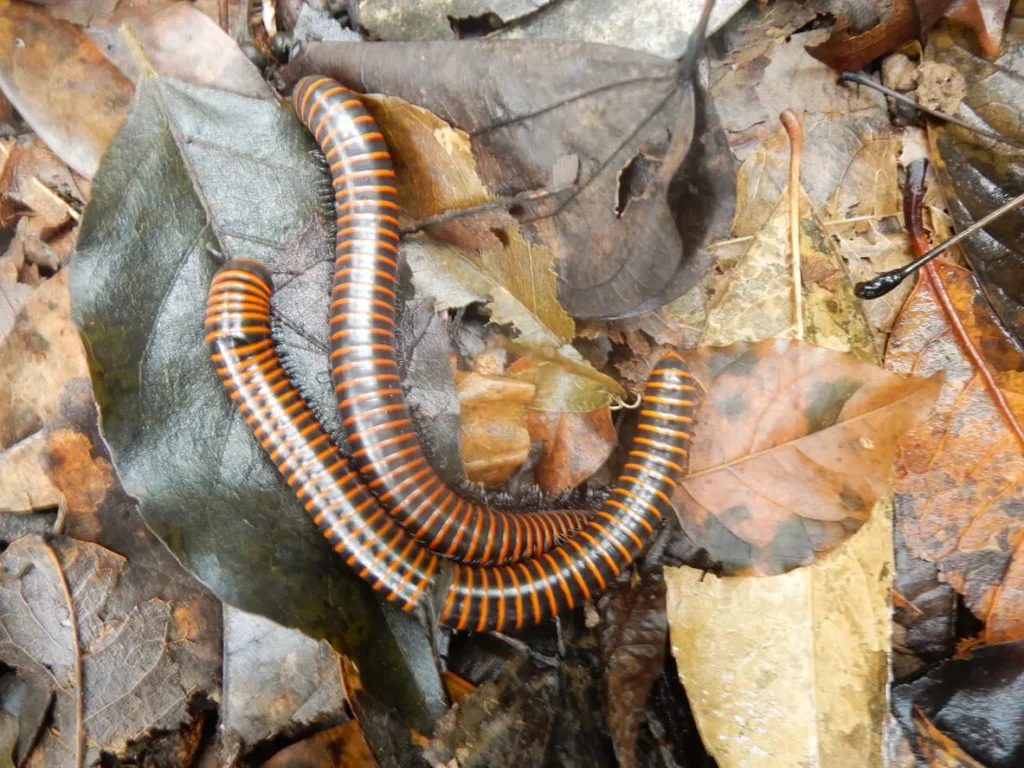
Eco-Friendly Solutions
At All U Need Pest Control, we believe that protecting your home should not come at the expense of the environment. In Strawberry, where the community is surrounded by farmland, wooded areas, and wetlands, it is especially important to balance effective pest control with eco-conscious practices. Our eco-friendly solutions are designed to manage millipede problems while protecting the natural landscape that makes Strawberry unique.
Minimum-Risk Pesticides
When chemical treatments are necessary, we rely on products with the lowest possible risk to people, pets, and beneficial wildlife. Treatments are applied precisely in targeted areas such as crawl space vents, thresholds, and foundation lines where millipedes travel. This strategy avoids unnecessary exposure while maximizing effectiveness. In Strawberry, where rainstorms are frequent, we carefully time applications to ensure they last longer and provide protection when millipede activity is highest.
Eco-Friendly Solutions
Eco-friendly control also means using natural methods to discourage infestations. Improving drainage, keeping gutters clear, and replacing thick mulch with gravel near the home all reduce pest activity without relying solely on chemicals. In Strawberry, where many homes are surrounded by large trees, clearing leaf litter regularly is one of the simplest yet most effective eco-friendly steps homeowners can take. By combining these natural solutions with professional treatments, we provide long-term results that are sustainable.
IPM Practices
Integrated Pest Management (IPM) combines multiple strategies to address pest problems. Instead of depending only on treatments, IPM involves inspection, exclusion, sanitation, and targeted applications. In Strawberry, IPM means addressing the challenges of heavy rainfall, shaded yards, and nearby farmland that creates rich organic matter for millipedes. By tailoring our IPM programs to these conditions, we provide lasting results that reduce the need for frequent treatments and help maintain a healthy environment.
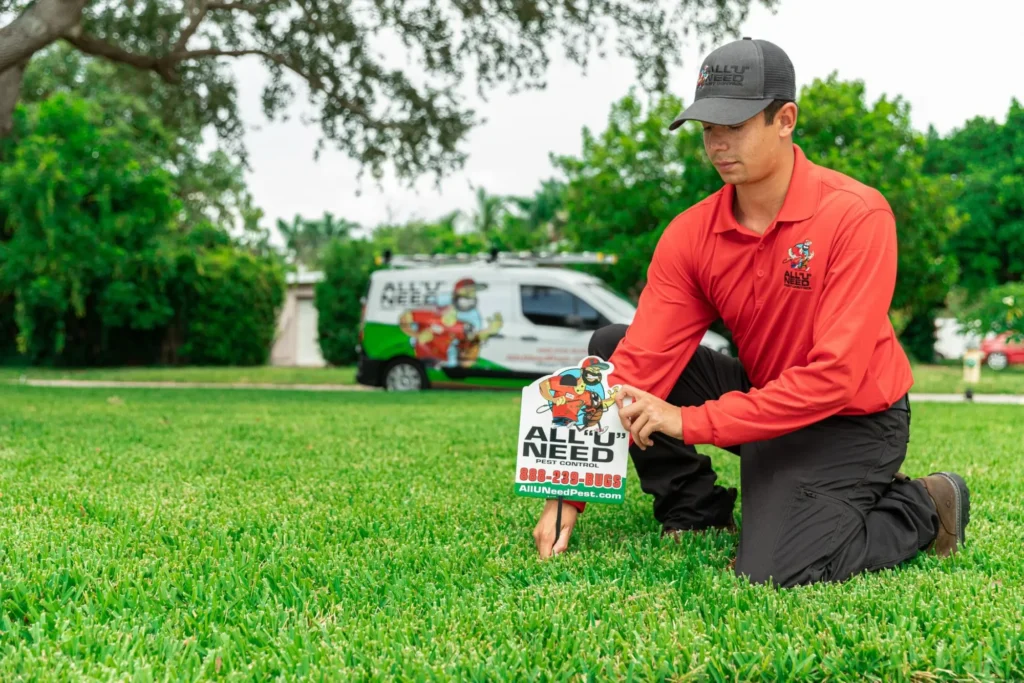
How to Prevent Millipedes in Strawberry, SC
Prevention is always more effective than reacting to infestations after they occur. In Strawberry, where the climate is humid and landscaping often includes mulch and pine straw, it is important to take proactive steps to reduce the chances of millipede problems.
Reduce Moisture Levels
Moisture is the main factor attracting millipedes. Use dehumidifiers in laundry rooms, basements, and bathrooms where humidity builds up. In crawl spaces, improve ventilation or consider full encapsulation to reduce dampness. Outdoors, extend downspouts and add splash blocks to redirect water away from the home. Level or fill low spots in your yard that remain soggy after rainstorms. These changes can significantly reduce millipede populations.
Seal Entry Points
Even small cracks provide entry for millipedes. Install or replace door sweeps, seal around window frames, and caulk gaps around utility lines. Protect vents with durable screens and add weep hole covers that allow airflow but block pests. Because Strawberry often experiences heavy rain and soil shifting, it is important to reinspect these areas regularly.
Remove Organic Debris
Millipedes feed on rotting organic matter, so reducing these food sources helps prevent infestations. Rake leaves after storms, thin mulch layers, and dispose of grass clippings away from the foundation. Keep compost piles and stacked firewood away from the house. In Strawberry, where tree-lined properties are common, regular debris cleanup is essential to keeping millipedes out.
Change Your Landscaping
Landscaping choices can either attract or deter millipedes. Pine straw, a popular mulch option, holds moisture and is highly attractive to these pests. Replacing it with stone or gravel near the foundation helps keep soil dry. Trim shrubs and trees back from siding to promote airflow. Choose plants that require less watering near the home. These changes reduce harborage while keeping your yard attractive.
Keep Your Home Clean
Clean homes are less appealing to millipedes. Indoors, reduce clutter in basements, garages, and porches, and store items off the floor. Outdoors, do not leave wet mats or bags of soil against walls. Wipe condensation from windows and fix plumbing leaks quickly. These habits make your home less welcoming to millipedes.
Work With a Pest Control Expert
While prevention steps are helpful, professional expertise ensures infestations are eliminated and kept under control. At All U Need Pest Control, our Strawberry prevention programs include:
- Identifying and sealing millipede entry points such as doors, vents, and weep holes.
- Applying targeted treatments along outdoor pathways and foundation edges timed around rain cycles.
- Offering Strawberry-specific advice for drainage, mulch use, and crawl space care.
Location Contact:
419 N Cedar St Summerville, SC 29483
Get Directions for 419 N Cedar StSummerville, SC 29483 on Google Maps843-489-8818
Call All "U" Need Pest Control